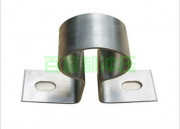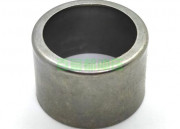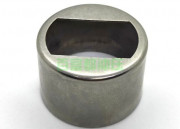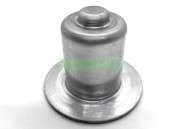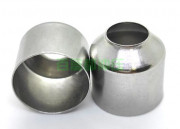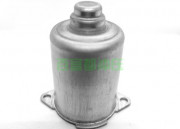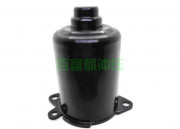Assembly principles and debugging points of metal stamping parts
The key to die assembly of metal stamping parts is to ensure that the upper and lower die bases are raised, the concave die and related parts can work normally in the corresponding positions of the clamping die, and the workpieces that meet the product requirements are stamped out. , It should be mentioned that various components used for assembly need to meet the assembly process requirements proposed by various parts.
For example: for the fixing plate of multiple punches, the relative position dimensional accuracy and step distance accuracy between each type of hole must meet the requirements of the concave die and the discharge plate. The bolts and pins on the backing plate pass through the holes, which can be marked, Quenching, upper and lower surfaces should be strictly polished and flat. The overall concave die installed on the upper and lower die bases should not only meet the graphic requirements, but also process bolt holes and pin holes. After heat treatment and finishing to be put into assembly. Need to connect the fixed mold base. When assembling the guide plate, the screw holes and pin holes on the guide plate should be drilled through the corresponding holes on the die. With hinges; the mold type and structural characteristics of hardware stamping parts Although they are different, the assembly methods and installation sequences used are also different, but the assembly principles should be followed.
When assembling a die for metal stamping parts, first select the assembly base as the assembly benchmark for the metal stamping die, and then gradually assemble other die parts according to the benchmark components; the selection of the benchmark components depends on the structural characteristics of the metal stamping die; guide plate mold The frame should also be used as the guide plate of the unloading plate as the assembly reference part; the metal punching die guided by the guide column generally uses the concave die as the assembly reference part, and the blanking punching compound die selects the ejector plate as the assembly reference part, and the push plate is used as the assembly reference part. The premise is that the output center point is opposite to the center of the tie rod.
After selecting the reference parts, the parts of the metal stamping die are first assembled into assemblies according to their independent connection relationships, and then the base parts are used as the assembly benchmark to complete the assembly of the metal stamping parts.
What are the key points for debugging of metal stamping molds in the processing workshop?
1. Close debugging of metal stamping die. The die and the die should be matched to ensure their proper clamping height and opening height.
2. Debugging of the guide device. The guide column and guide sleeve must have good matching accuracy to ensure the stable and reliable movement of the metal stamping die.
3. Debugging of convex and concave die edges and gaps. The blade is sharp and the gap should be even.
4. Debug positioning equipment. The location should be precise and reliable.
5. Uninstall and uninstall the debugging of the device. The discharge and discharge should be smooth, and there will be no jamming.
The above is the relevant content about the assembly and debugging of the metal stamping part mold, the metal stamping part mold is a one-time production. Some parts that constitute the mold entity are processed separately according to the dimensions and tolerances marked on the drawings during the manufacturing process. Such parts are usually directly assembled. Some parts can only be dimensioned according to the drawings during the manufacturing process, and the relevant dimensions can be coordinated. . I hope the above can be helpful to readers.
Read More →

